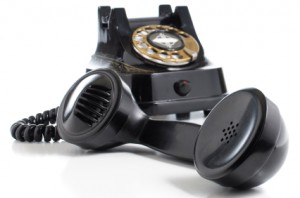The Surprising Reason You Lost That Last Sale
 How many times do we hear from someone out of the blue and wonder what it is they are after?
How many times do we hear from someone out of the blue and wonder what it is they are after?
Recently I met a CEO from an ASX top 200 (our Aussie version of DJI or FTSE 100) company at a social event. I had gotten to know him through my work with a Big 4 firm. Our conversation turned to the Partner who had completed much work for his company.
I asked, “Have you seen X recently?” He replied in words to the effect of, “I haven’t heard from him for a couple of years. He must be too important to contact me nowadays.”
The Partner in question had since taken on very senior roles within the firm, and even though the comment was meant in jest, I think there was a tone of underlying disappointment. I’m sure they had spent many hours together, probably talking not just about work, but about personal issues as well. Intimacy would have developed over time.
Now in the rear view mirror of time, this CEO may have come to believe that the care shown at the time by the Partner was not authentic, that it was used only as self-interest to gain revenue.
This I know would not have been the case; but certainly may now have become the perception.
This reinforces to me the importance of the simple ‘checking in’ call. It reminds me of Mizner’s, “Always be nice to people on the way up; because you’ll meet the same people on the way down”
The same man said, “A good listener is not only popular everywhere, but after a while he gets to know something.”
As you may know, the power of listening is a core theme in The Trusted Advisor and Trust based Selling.
At this time of year I remember a story, which at the time surprised me, but which I now completely understand.
A number of years ago I asked a friend what criteria he had used to decide on a service provider for a facility management contract. He said it was a difficult decision; the 3 tender documents he received were similar, the people he met from each firm were all credible and seemed to be people he could work with. The clincher for him was that only one of the tenderers sent him a best wishes card for the holiday. That’s the firm he chose.
As Trust-based Selling suggests, it’s the ‘hard’ credentials that buyers consider necessary conditions and which they use to screen. But it’s the ‘soft’ credentials that are the tie-breakers, the sufficient conditions, that buyers use to make the final selection.
I also find inspiration regarding the importance of personal connection from an odd couple: an 18th century postmaster, and an early Greek philosopher:
“I love a hand that meets my own grasp that causes some sensation” (Samuel Osgood).
“A hidden connection is stronger than an obvious one” (Heraclitus of Ephesus)

 Beginning just three years ago, some large firm legal fees reached that amount – about $17/minute – providing fodder for legal bloggers, and Internet articles on a variety of topics, including
Beginning just three years ago, some large firm legal fees reached that amount – about $17/minute – providing fodder for legal bloggers, and Internet articles on a variety of topics, including  Story 1: Don’t Do This
Story 1: Don’t Do This This is week three for me of a four-week road trip. I’m getting a little loopy, but am collecting some wonderful client experiences, lessons and stories. Here’s one from a British account executive.
This is week three for me of a four-week road trip. I’m getting a little loopy, but am collecting some wonderful client experiences, lessons and stories. Here’s one from a British account executive.